Microsoft Project has been the most popular project management software for years. That’s mainly because project managers and team members were used to other Microsoft products, not necessarily because Microsoft Project is the best choice.
While there have been challenges to its rule, and many who have surpassed it, Microsoft remains a giant in this industry. No discussion of project management software would be complete without including Microsoft Project.
But what is Microsoft Project and what are its key features? Let’s explore Microsoft Project so you can determine if it’s the right project management software for you. If it doesn’t check all of your boxes, you may be better off with a Microsoft Project alternative.
What Is Microsoft Project?
Microsoft Project is project management software that’s used to create schedules, project plans, manage resources and keep track of time. It has features such as Gantt charts, kanban boards and project calendars for project management professionals.
Microsoft Project is also known by other names such as MS Project or Project Professional, which is the software’s current official name. There are also other Microsoft Project products with similar names such as Project Online, Project Server and Project for the Web. You can access those products by acquiring a Microsoft Project Plan subscription, which has three pricing tiers to choose from.
If you’re looking for a less expensive and more flexible project management software, there’s ProjectManager, work and project management software that’s collaborative and lets you work how you please. Unlike Microsoft Project, we offer a collaborative, intuitive platform with multiple project views—managers can plan projects on Gantt charts or the sheet view while teams can use kanban boards, calendars or robust task lists to manage their work. Get started today for free.
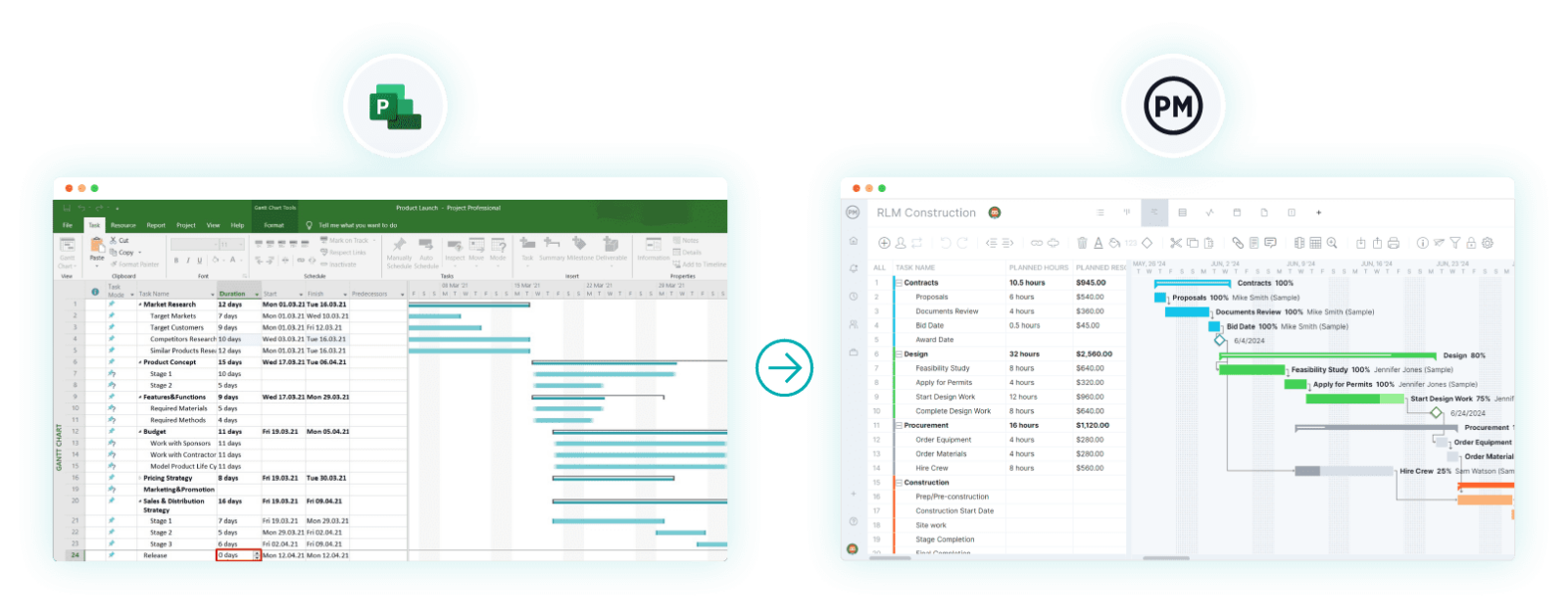
Microsoft Project Views
Like ProjectManager, Microsoft Project offers multiple views for project managers and teams though its platform is not nearly as collaborative. Here’s a simple description of MS Project’s offered views.
- Grid View: A project view that is used to plan and manage projects with a task list.
- Board View: A visual kanban board view that helps with managing workflow and status.
- Timeline View: The traditional Gantt chart is used for scheduling tasks over a project timeline.
Microsoft Project Features
There are plenty of features that project managers and their teams need to better manage their work and MSP has a number of them. However, to get a full picture, here’s a list of the key features available to customers who are willing to pay the price.
- Project Planning: Use Gantt charts and kanban boards to plan work. Microsoft Project’s planning features are much more robust than those of Microsoft Planner.
- Communication & Collaboration: Teams can work together on projects. Alternatively, you can use Microsoft Teams for a more cost-effective communication solution.
- Coauthoring: Stakeholders and team members work together to edit and update task lists and schedules.
- Reporting: Pre-built reports that can track progress, resources, programs and portfolios.
- Roadmap: Track programs and project portfolios.
- Timesheets: Collect project and non-project time for payroll and invoicing.
- Resource Management: Manage resources by requesting and assigning tasks.
Plans and Pricing
Microsoft Project evolved from desktop software to a subscription-based product portfolio. You can choose between three monthly license plans: Project Plan 1, project plan 3 and Project Plan 5. Here’s a quick overview of what you get with these plans.
- Desktop Version: To get the on-premises version of Microsoft Project, you’ll need to pay $679.99 for Project Standard 2021 and $1,129.99 for Project Professional 2021.
- Project Plan 1: For $10 per user per month, you only get to use Project Home, and Project for the web. Two light versions of Project Professional and Project Online. This is mostly recommended for team members.
- project plan 3: For $30 per user per month, you get to use a package that’s sufficient to manage projects, but has no project portfolio management features. You can use the desktop client Microsoft Project and Project Online.
- Project Plan 5: For $55 per user per month, this is everything Microsoft Project has to offer: Project for the web, Project Online and Desktop client.
Many argue that this pricing structure is not convenient for many teams because prices can go up exponentially as you add team members. There are many Microsoft Project alternatives in the market such as ProjectManager, which have the same project portfolio management features for less.
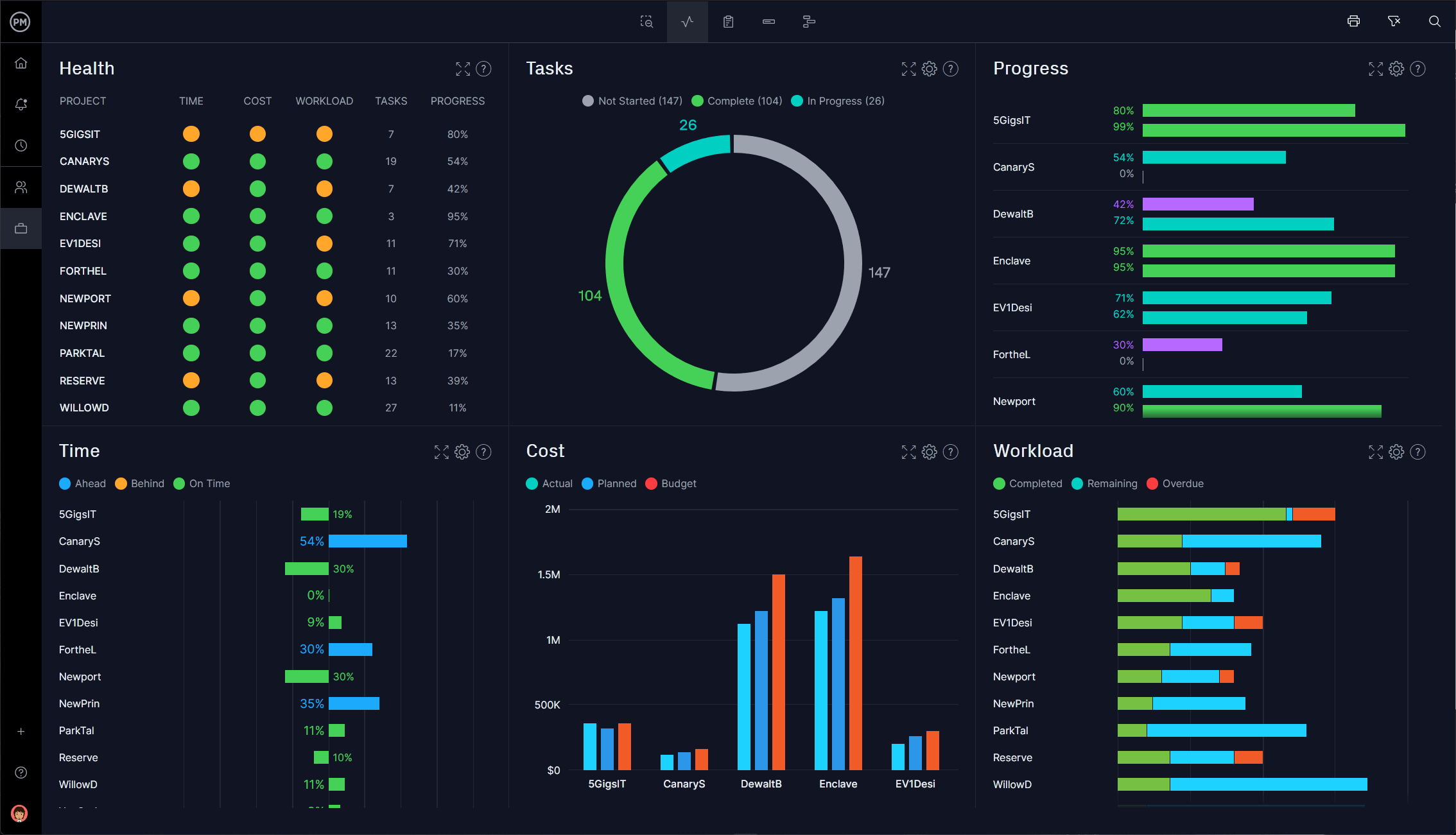
Pros and Cons of Microsoft Project
Nothing is perfect. Even Microsoft Project has its drawbacks. If you’re thinking of trying it for yourself, take a moment to consider its pros and cons.
Pros
- One of the biggest pros is that it’s a Microsoft product so it integrates with the company’s other products including Office 365, Skype and Sharepoint.
- It has a similar interface to other MS products.
- It’s been around for a long time, and its features have developed over time.
- It’s part of Microsoft and has the reliability and support that’s associated with an established company.
- It has financial management tools that help project managers with estimating budgets.
- It can be licensed as a desktop application. While this might make it seem more like a dinosaur, there are still organizations that prefer this over a cloud solution.
- It has templates to help users get started, which saves time.
Cons
- Though MS Project Online is a cloud-based solution, it has several disadvantages. Even with Sharepoint, which is designed to take advantage of the cloud, MS Project has great limitations on the cloud.
- It’s difficult to learn and use. There’s a lot of time and effort, and even intensive training, that must first be invested in the software before project managers and their teams are comfortable using the software. This adds time to the project during the implementation stage.
- It’s expensive. The prices quoted above, again, are per person, per month. This quickly adds up as you buy licenses for team members who require access to the software in order to take advantage of its collaborative features. Otherwise, it’s more of an expensive tool solely for the project manager.
- It’s not easily shareable. As mentioned earlier, files are saved in an MPP, a proprietary format, so that if you’re not using MS Project, you can’t read those files. This would be less of a problem if the software was less expensive, but if you must have an MS Project license to view an MPP file, then it adds up. This creates a lot of unnecessary hurdles when sharing project files.
FAQ
Is Microsoft Project Free?
No, Microsoft Project is not free and you’ll need to pay a monthly subscription. There are three pricing tiers including Project Plan 1, project plan 3 and Project Plan 5.
Is Microsoft Project Included in Office 365?
Microsoft Project is part of the larger suite of Microsoft Office products, yet it is not packaged with other Office software such as Word, Excel and Outlook. There are two editions available, the standard and professional versions. Both share a unique file format, called MPP.
Does MS Project Work on Mac?
Currently, the desktop version of Microsoft Project isn’t compatible with Mac computers, but there is a workaround if you need to run MS Project for Mac. You can use Microsoft Project Online or choose one of the many MS Project alternatives.
ProjectManager is the best MS project alternative for Mac, because it provides even more features than Microsoft Project in a fully online collaboration environment that’s easier to use.
ProjectManager Is the Best MS Project Alternative
If you feel like MS Project isn’t the perfect fit for you, don’t worry. ProjectManager lets you plan projects online in an easy-to-use format that’s ideal for collaboration. You can import and edit MPP files via our Microsoft Project integration.
Share Plans With Team and Stakeholders
Unlike MS Project, our software is collaborative to the core. You don’t need to sign up for SharePoint or break the bank buying licenses for all your team members. Managers can make plans on our interactive Gantt chart, even filtering for the critical path. Once a baseline is set, you can track progress in real-time. Then just share the plan with your team and stakeholders. It’s that easy.
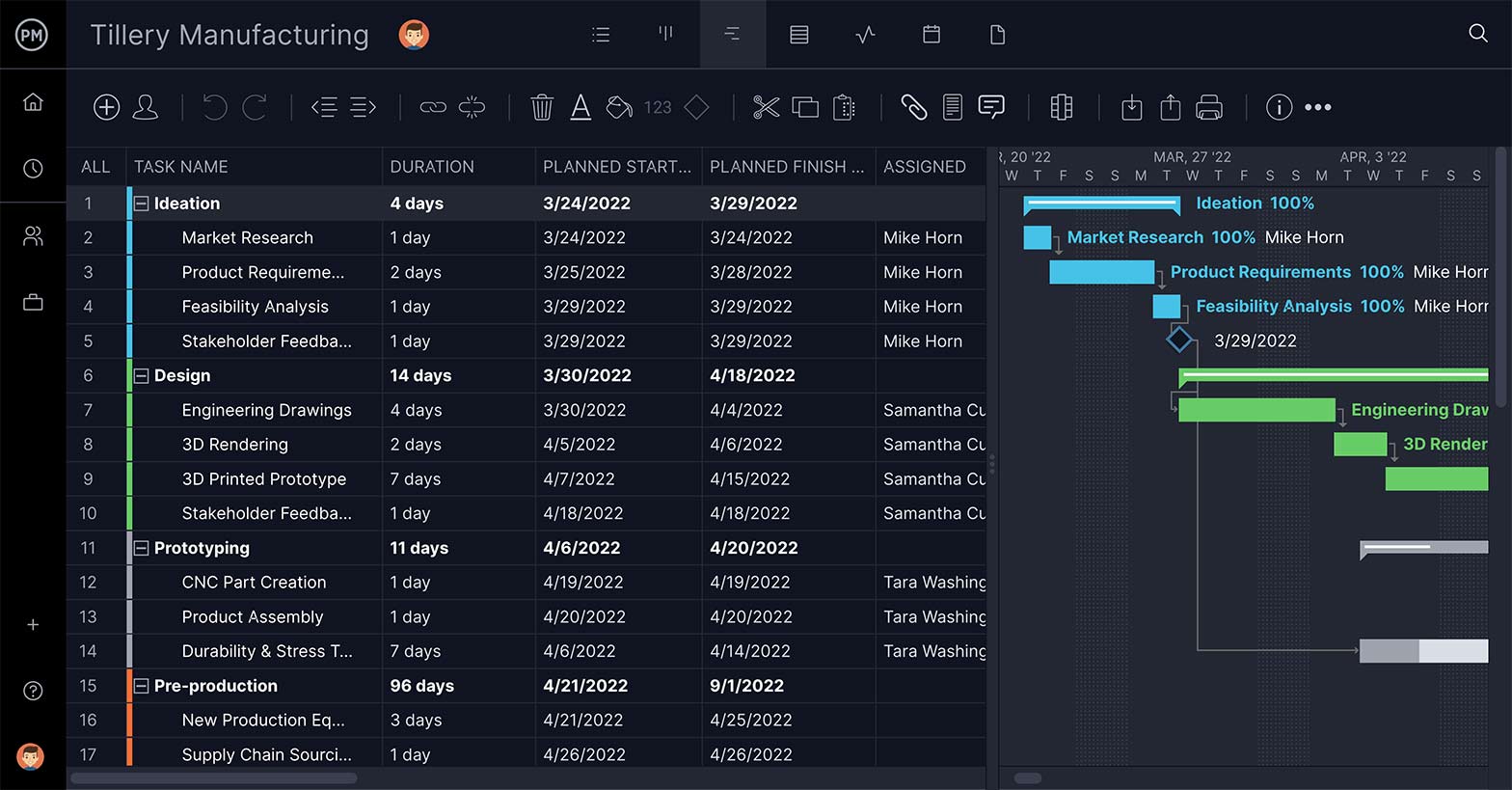
Automate Busywork and Keep Teams Productive
Our software is easy to use and there’s no training. It’s plug-and-play. In fact, we’ve added custom workflows and task approvals to streamline your business processes and keep teams focused on more important matters. Managers can create as many triggers as they want to set off actions and then authorize who can change the status of a task to control the quality of the work being done.
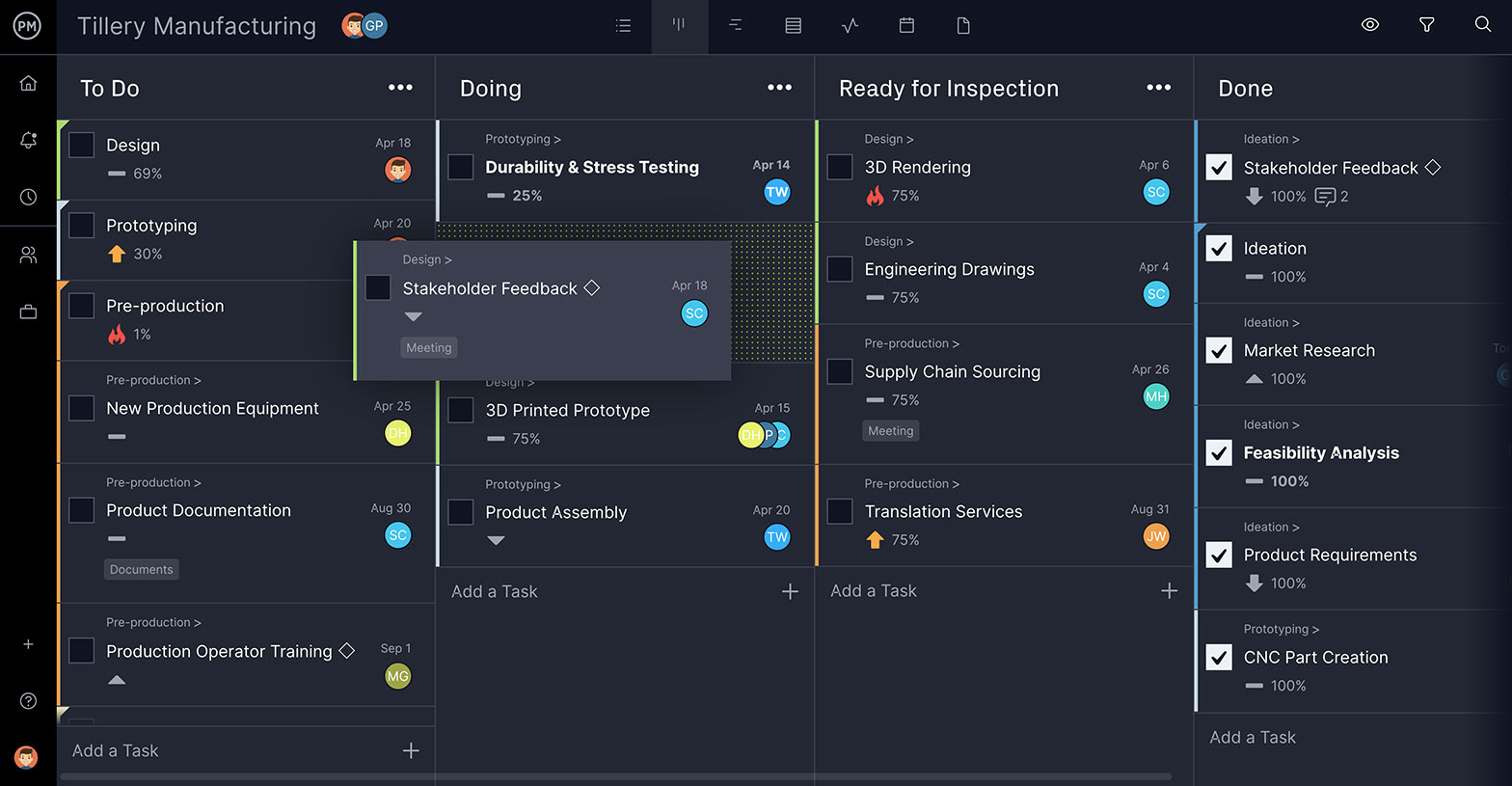
Collaborate and Work Better Together
While ProjectManager doesn’t have a desktop application, its cloud-based software can be used anytime, anywhere. Hybrid teams love our software because both traditional and agile teams can use it to work together. Teams can comment at the task level, share files and stay updated with email notifications and in-app alerts. There’s a single source of truth so everyone is always on the same page.
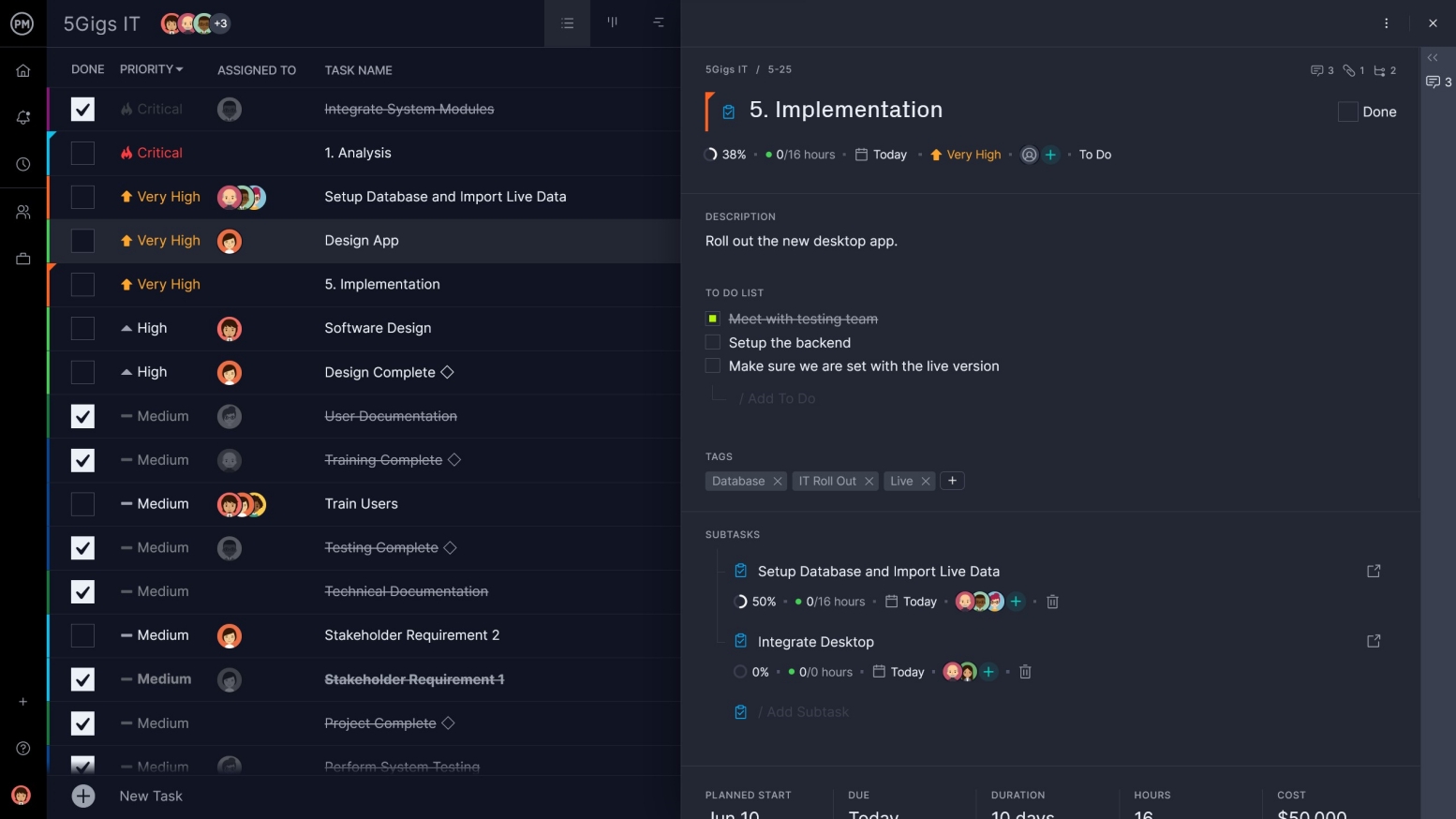
ProjectManager even offers hands-on support from a knowledgeable support team. It’s all part of the package when you use our tool, as well as onboarding and training for business and enterprise plans. Maybe it’s time to take down the Goliath in the industry and work with a tool that helps you rather than gets in your way.
Related Content
- Top Microsoft Project Management Software
- Best Microsoft Project Alternatives
- Best Microsoft Planner Alternatives
- Microsoft Project Server: Pros, Cons and Best Alternatives
- Microsoft Project Online: Pros, Cons and Free Alternatives
- Microsoft Project Viewer – How to View & Edit MPP Files Online
- MPP File Extension: What Is It & How to Open It
- Microsoft Project for Mac: How to Run MS Project Files on Your Mac
- What Is Microsoft Lists? Uses, Features and Pricing
- Microsoft Dynamics 365 Project Operations: Pros, Cons and Best Alternatives
ProjectManager is a cloud-based project management software, which automatically reflects status updates when they’re posted. Project managers have the tools to control the planning, monitoring and reporting of the project’s progress, and team members can collaborate with features that are simple to understand. Try ProjectManager today with this free 30-day free trial.

